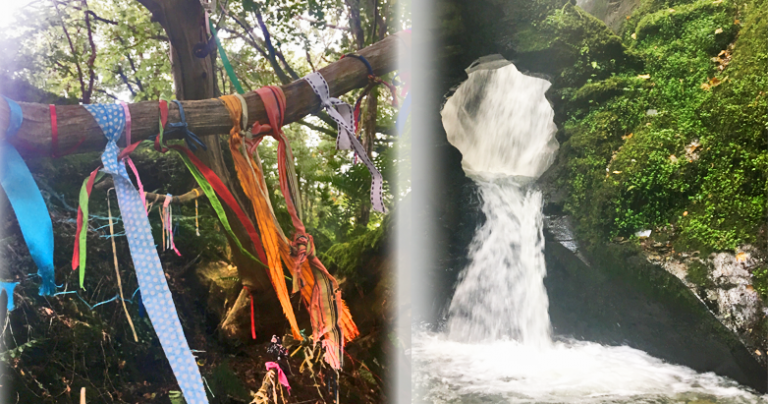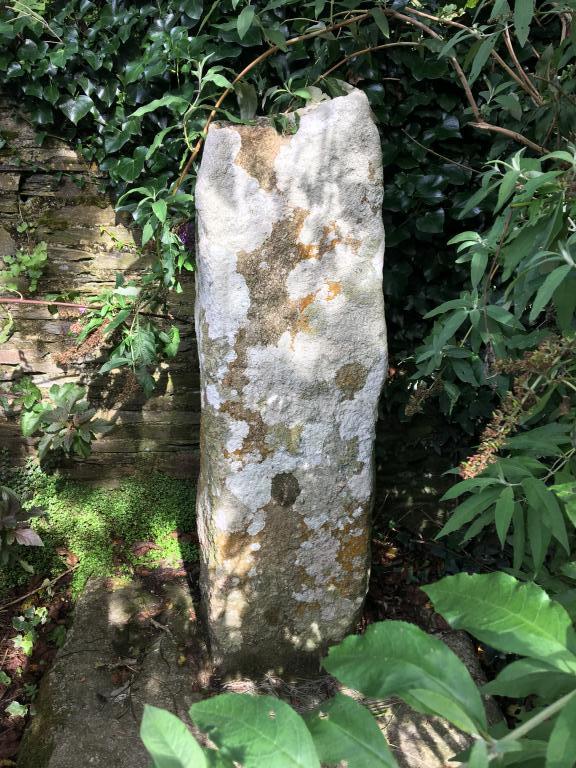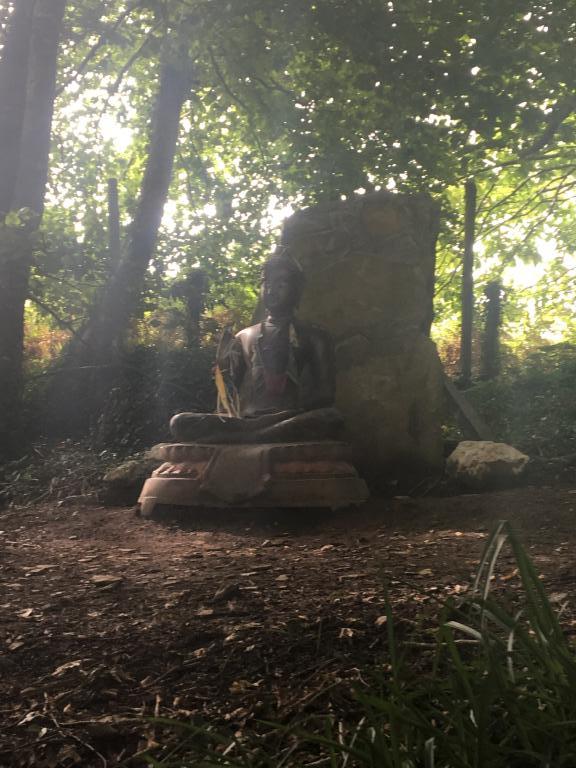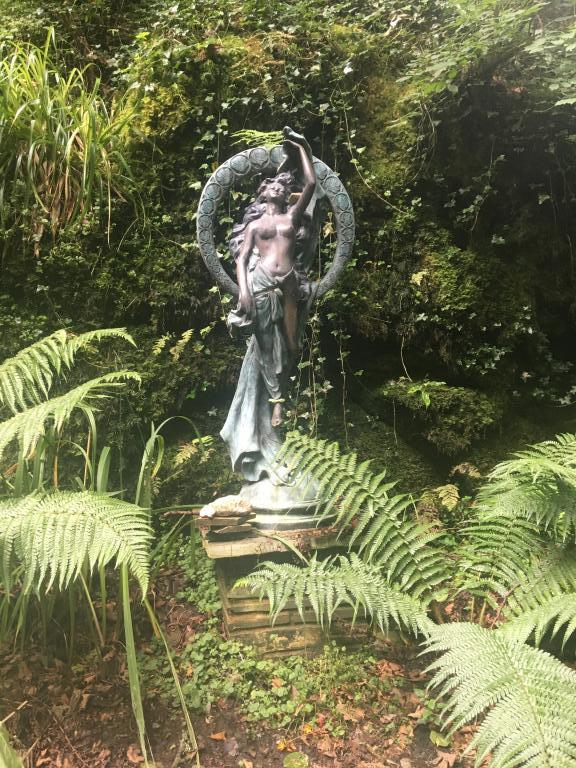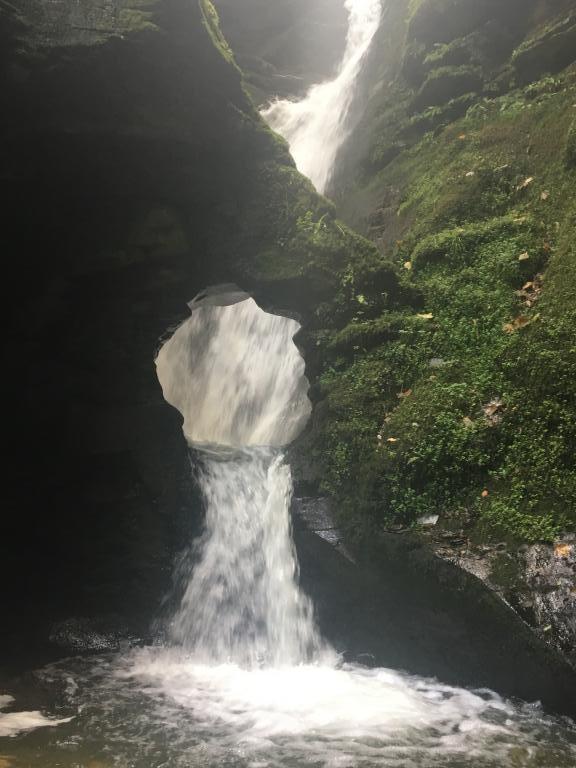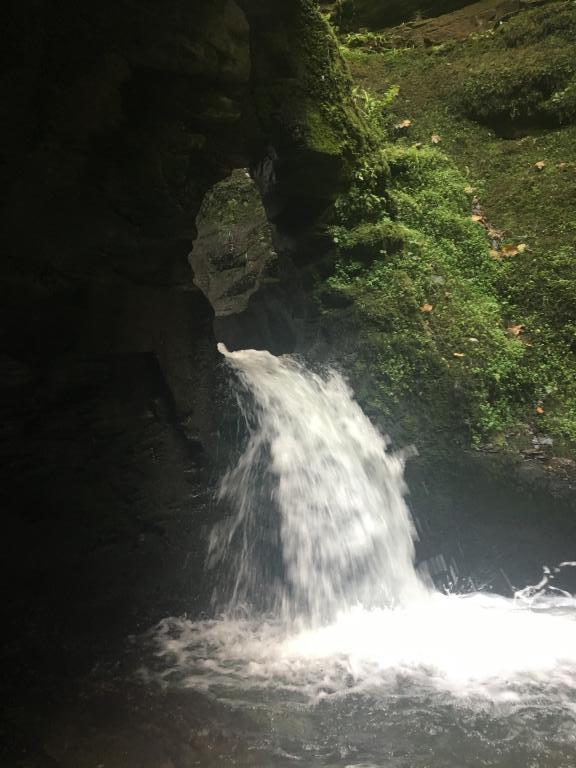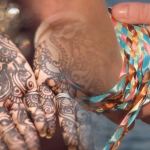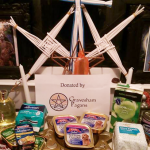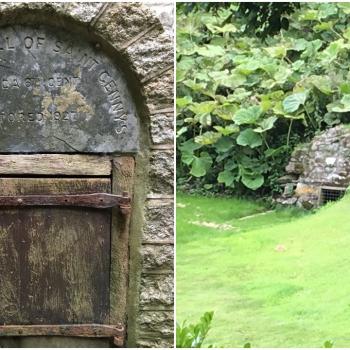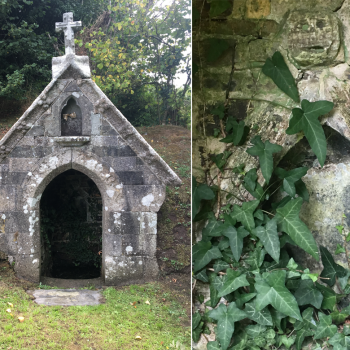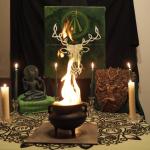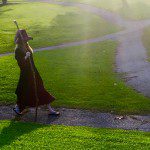Many people regard Cornwall is one of the most spiritual places in Britain. I’m one of them. Ever since I was a small child, I’ve felt that Cornwall is a magical place with a truly unique energy.
With its Arthurian connections, Cornwall has a glut of sites of mythical, magical and spiritual significance. But one of my favourite places of all is St. Nectan’s Glen, which I visited when I went to Cornwall with my family last summer.
St Nectan’s Glen is a woodland in Trethevy, near Tintagel. At its centre is a spectacular waterfall called St Nectan’s Kieve. Legend has it that in the 6th century, St Nectan had a hermitage above the waterfall, and rang a silver bell to warn ships of offshore rocks at the mouth of the nearby Rocky Valley.
Visiting the waterfall is a true pilgrimage, passing several other spiritual landmarks and sites of interests.
The entrance to the glen is close to a lovely sacred site in its own right – St. Piran’s Holy Well.
St Piran is one of Cornwall’s most important saints; his emblem, a white cross on a black background, is also the flag of Cornwall. The well is in wonderful condition and is very beautiful – in a way, it’s almost a shame that its significance is rather eclipsed by St Nectan’s Kieve!
Near the well is St Piran’s chapel, which was locked on the day we visited.
Near the well and chapel is another fascinating landmark – a Roman milestone, one of only five in Cornwall.
Even at the entrance to the glen, there are signs that people regard this as a sacred, magical place. Before long, I discovered what can only be described as a faerie crib.
Further into the wood, you can find these fallen trees with coins hammered into them; a practice for making wishes.
We added a coin of our own and proceeded into the woods, following the river. It’s easy to see why these woods are thought to be magical. It is exceptionally beautiful.
The waterfall itself is on private land, and you have to pay to see it. I didn’t mind this at all – after all, private ownership helps to protect the waterfall. I’m glad it has stewards to keep it safe.
You pay at a small visitor centre, which in itself is interesting. The owners are very kind and they’ll lend you wellington boots so you can walk in the river to access the waterfall without getting too wet. They also sell paper clooties to tie as offerings; they do this to discourage people tying clooties and making other offerings made from non-biodegradable material.
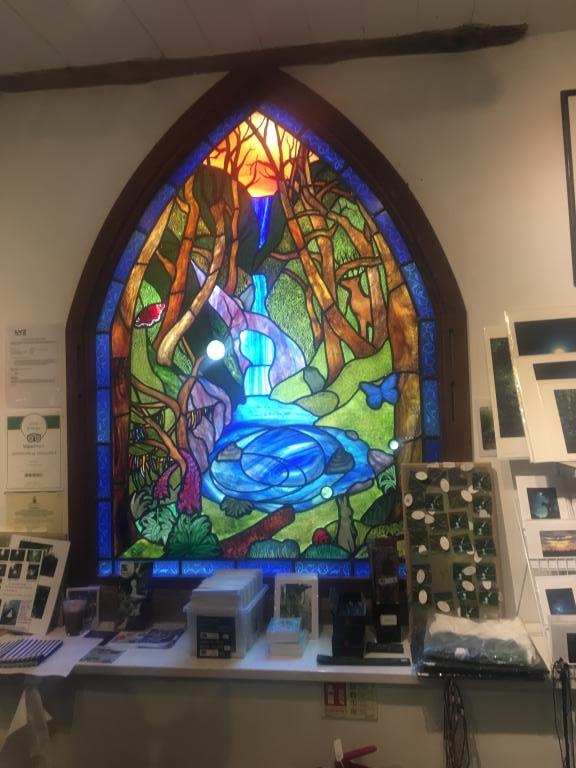
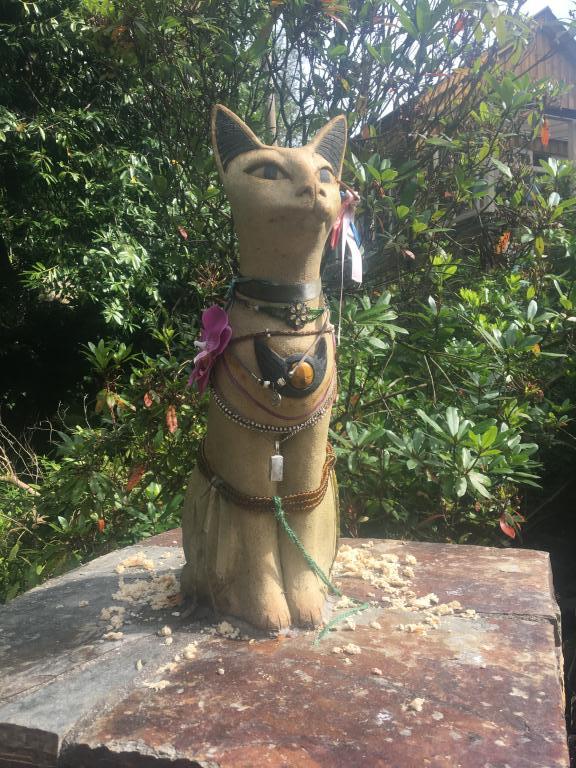
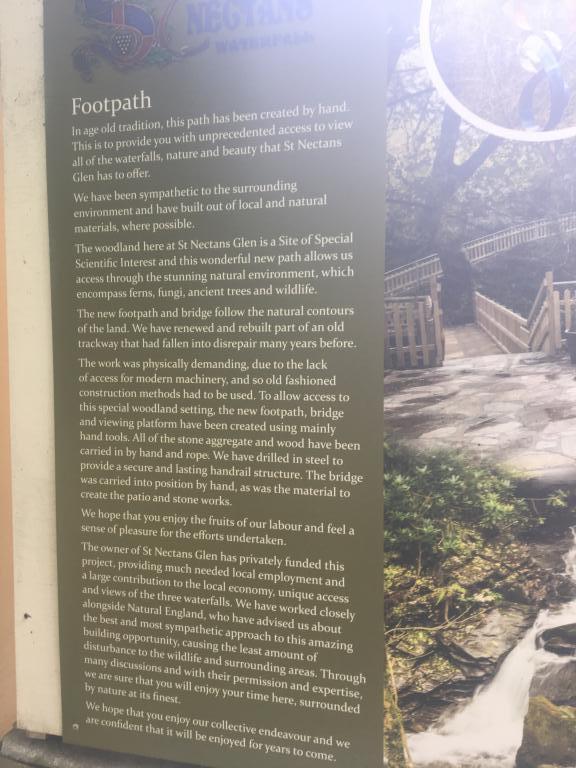

The path towards the waterfall has a few statues of figures from different religions. This reflects the fact that St Nectan’s Glen’s sacredness is by no means limited to a single faith tradition. People of all faiths and none come here for their own particular reasons.
As you approach the water, the clooties appear.
There’s actually a number of waterfalls at St Nectan’s Glen. This is the first one you come to.
Right by the main waterfall, there’s a small “island” that you can wade across to in wellies. It has another coin log.
And finally, you turn a corner and come to St Nectan’s Kieve itself.
It’s almost hard to believe that such a picturesque waterfall is completely natural. It looks like something out of a fantasy painting.
There are all kinds of offerings everywhere in this “inner sanctum”.




I have to admit, it was difficult to leave this sacred space. I could have spent hours here – and I’m sure many people do.
If you’d like to visit St Nectan’s Glen, you can find more information here.

